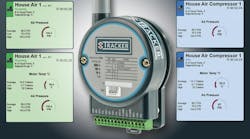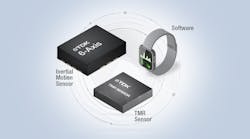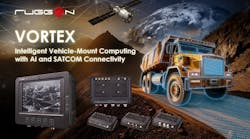FASTSUITE Edition 2 – the next-generation 3D simulation software for the digital factory has already scored big points in offline programming of complex robot applications, but this has now been radically expanded to include functions for layout planning, PLC validation, and virtual commissioning.
CENIT will demonstrate live the entire production process of a manufacturing cell from a door production facility implemented at Japanese supplier Hirotec – from layout generation to commissioning – with full use of the concepts and possibilities of Industry 4.0 and the digital twin. The virtual model of the facility shown – and the real facility as well – is connected online with a FANUC robot control system and an SPS by Mitsubishi.
Layout generation derives from a manufacturing/assembly sequence planning system based on predefined simulation components that already exist as mechatronic models. If and when project-specific components are required, these can be added as “smart components” via a direct link to the extensive 3D manufacturer’s catalog of CADENAS PartSolutions and used immediately in simulation.
Technology Packages for the Latest Programming Methods
The next step, offline programming, uses “technology packages” to apply state-of-the-art programming methods, e.g. semantic, vendor-independent robot programming. These mature technology packages not only support process-specific generation of robot toolpaths, they also automatically define process parameters and control commands. This ensures consistently high programming quality, independently of the deployed robot type or the end-user’s programming experience. At the booth, CENIT will demonstrate this process using a range of technologies including roller hemming, path welding, 3D laser trimming and point welding.
PLC Validation for Shorter Downtimes and Project Cycles
Since the entire layout is available as a mechatronic model of the production facility, the simulation environment can be used directly for PLC (programmable logic controller) validation and virtual commissioning. The virtual facility behaves in precisely the same way as the real-world hardware – which is represented at the IMTS show by a MITSUBISHI PLC controller – including all I/O signals, sensor data, etc. Among other benefits, this permits use of the PLC control software for testing and optimization purposes during the early stages of a project, before the real facility even exists. This lets system integrators shorten project cycle times drastically and recognize and correct potential errors much earlier. Thanks to the integration of the virtual robot controller, the robot simulation can be done exactly as in reality and it can be done on the basis of a back-up of the real controller. This way the complex, expensive and not always available integration of RCS modules can be avoided.
Manufacturer-Independent Offline Programming: The Perfect Fit for OEMs
CENIT will also show the remarkable degree of integration that can be achieved in path welding. Comprehensive welding strategies and methods are available parametrically, and the software supports adaptive processes (measurement of component position, seam tracking, etc.). A live demo of an integration with FANUC‘s RoboGuide will showcase the perfect teamwork between the manufacturer’s software and manufacturer-independent offline programming. The FANUC RoboGuide acts as a virtual controller, working with the 3D programming and simulation software FASTSUITE Edition 2 in order to achieve an even more realistic simulation.
IT consulting and software firm CENIT will be on location at this year’s IMTS (Booth 133331) to present the latest version of FASTSUITE Edition 2







